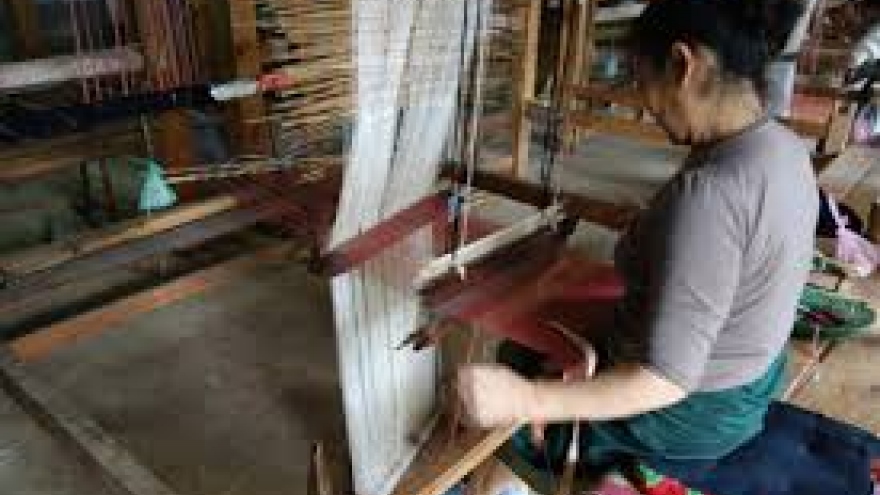Brocade weaving: dexterity of M’Nong women
VOV.VN - M’nong women in many hamlets in Dak Ndrung commune, Dak Nong province, are engaged in weaving brocade fabric. Their colorful products show off their dexterity and diligence and contribute to preserving M’nong tradition and culture.
 |
U Han said “In the past a M’nong woman had to learn how to weave. She had to show off her brocade blankets and dresses to her husband’s family. When I got married, I didn’t know weaving. My husband’s family didn’t recognize me as their daughter-in-law. Then I progressed from simple to complex skills until I could weave everything.”
Another M’nong woman, U Hau, says brocade weaving has been handed down from generation to generation, from mothers to daughters, and from elder sisters to younger sisters. U Hau said, “When I was small, I used to sit next to my mother’s loom and watch her work. My father made a small loom for me. I learned to arrange the loom, hang threads, and weave simple things. When I was 12 years old, I could make bags, dresses, and loin-cloths. Now I weave whenever I have free time.”
Now very few girls learn brocade weaving because the price of materials has increased while ready-made clothes have become available at cheaper prices.
Thi Nhum of Bu Prang hamlet, says “Brocade weaving is very important in our life. At her wedding, a bride must have brocade blankets and dresses to show to the groom’s family. We worry that today young people don’t learn to weave and soon the craft will be lost.”
Dak Ndrung commune offered weaving classes to hundreds of M’nong women between from 2012 and 2014. Following the training, they made their own looms to weave in their leisure time. The local authorities are seeking ways to promote the M’nong craft tradition and boost the income of the artisans.



